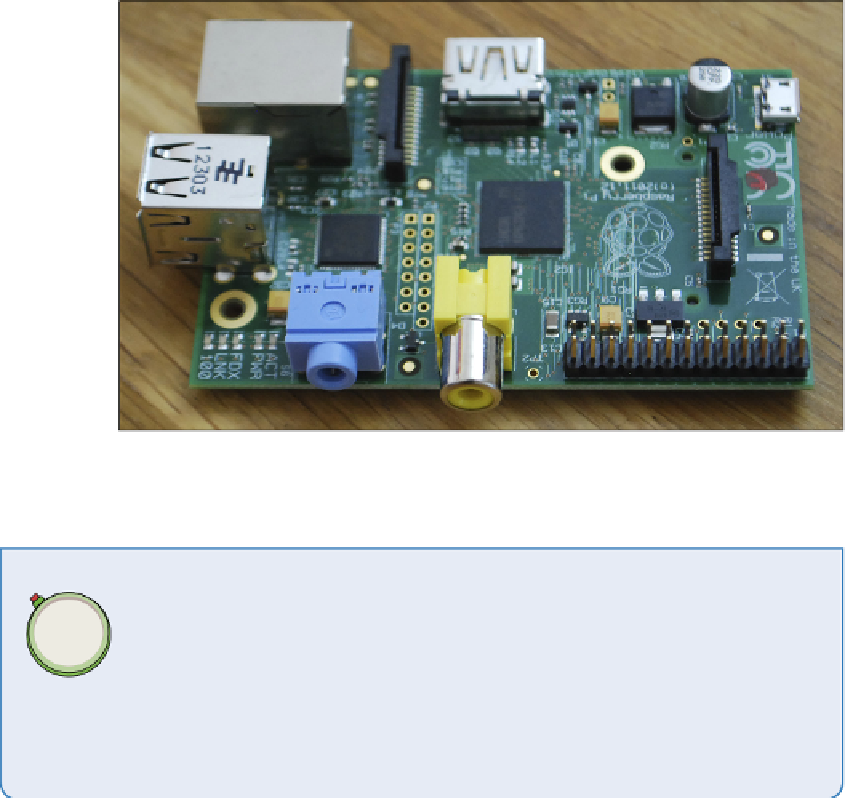Hardware Reference
In-Depth Information
FIGURE 8-1
he General Purpose Input Output (GPIO) pins on a Model B
Raspberry Pi
Input
refers to the raw data or information that can be entered into a computer
system like a Raspberry Pi before it is processed. An example of an input device is
a push button or a microphone. The Raspberry Pi has pins that can be connected
to these and other devices.
Output
refers to the data or information that is communicated to you as it exits a
computer system like a Raspberry Pi after it has been processed. An example of
an output device is a speaker or monitor screen.
Using a Raspberry Leaf Diagram
Raspberry Pi projects using GPIO pins give you the opportunity to use electronics con-
cepts and techniques to make something happen electronically, such as making an
LED light up. Many of the pins have diferent purposes, and the instructions in this
adventure tell you which pin to use for each connection.
here are two
revisions
of the GPIO pin layout. Later in this adventure you will learn
how to ind out whether your Raspberry Pi is a Revision (Rev) 1 or a Rev 2. It is impor-
tant to know this before you begin any exercises in this adventure, as the instructions
here are based on Rev 2. Figure 8-2 shows the layout of the pins on a Raspberry Pi Rev
2 board. You should refer to this diagram when connecting cables to the pins, and
when writing your code to program them.












